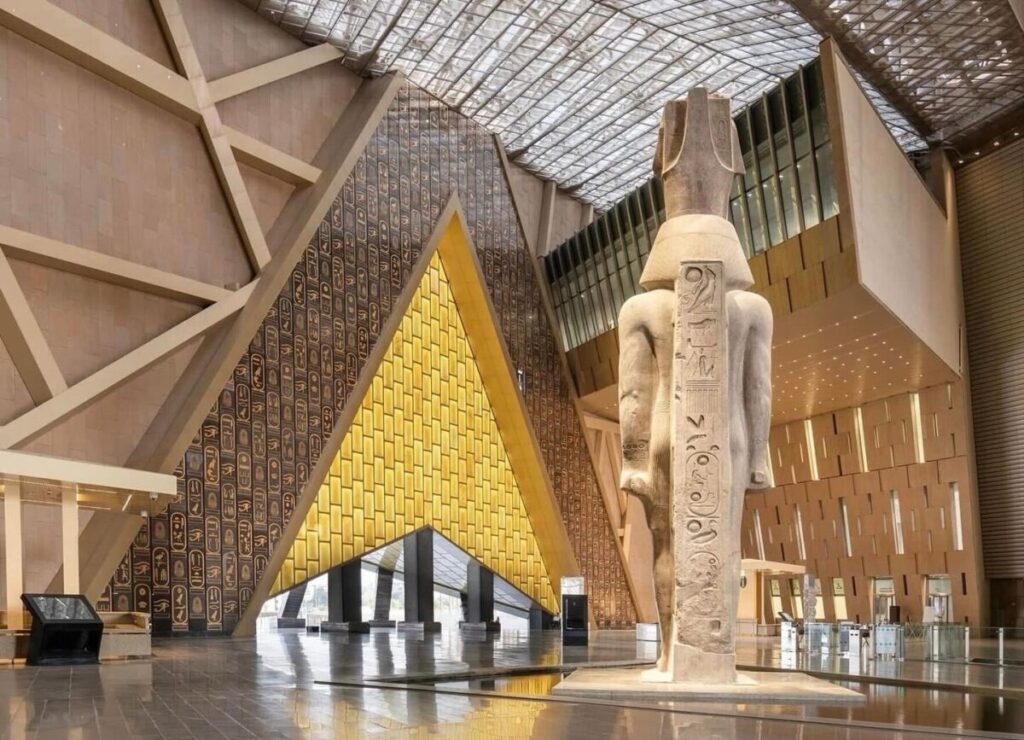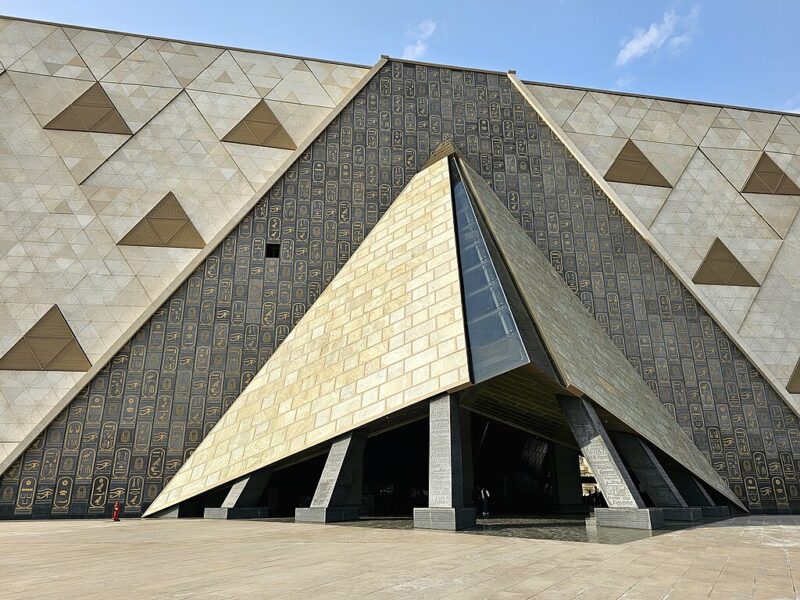Egypt Opens the World’s Largest Museum Beside the Pyramids
After two decades of work, the Grand Egyptian Museum has finally opened on the Giza Plateau – right next to the pyramids. For anyone fascinated by history, it’s a monumental moment. Egypt has gathered more than 100,000 artefacts under one roof, creating what is now the largest museum in the world dedicated to a single civilisation.
A Project 20 Years in the Making
The idea began in the early 1990s, when Egypt decided its vast archaeological treasures needed a modern home. Construction started in 2005, but the project faced repeated delays due to political changes and funding issues.
It finally opened in November 2025 – a massive complex spreading over 50 hectares, roughly twice the size of the Louvre’s grounds in Paris.
The Grand Egyptian Museum, or GEM, sits just two kilometres from the Great Pyramid of Khufu. Its architecture mirrors the desert around it: sharp geometric lines, sand-coloured stone, and a massive glass façade that frames the pyramids in the distance.
Inside, it holds an astonishing collection covering 5,000 years of history, from the earliest dynasties to the Greek and Roman periods.
The museum’s centrepiece is the complete collection from Tutankhamun’s tomb. More than 5,000 pieces have been moved from Cairo’s old Egyptian Museum and restored for display together for the first time.
Visitors can also see colossal statues, delicate papyri, royal jewellery, and intricate carvings that once filled temples and tombs along the Nile.
Built for a New Generation of Visitors

GEM isn’t a dusty museum of relics, it’s designed as a modern experience: vast open halls, interactive displays, climate-controlled galleries, and one of the world’s largest conservation centres.
The 11-meter-high statue of Ramses II greets visitors in the Grand Hall, and a monumental staircase lined with sculptures leads into the main galleries.
The museum is also intended to relieve pressure on older sites like the Egyptian Museum in Tahrir Square, which struggled to welcome millions of annual visitors.
The new building was funded largely by Japanese development loans and built by international teams, combining modern engineering with deep archaeological expertise.
For history lovers, the opening of GEM is the biggest event in archaeology in decades. It gathers Egypt’s heritage in one place, preserving fragile artefacts with the latest conservation technology.
It also gives the country’s ancient civilisation the scale and presentation it deserves, in its original landscape, facing the pyramids that inspired it.
How It Compares with the Louvre
The Grand Egyptian Museum and the Louvre tell very different stories.
The Louvre grew out of royal collections and became a showcase for the world’s great civilisations – Greece, Rome, Egypt, Mesopotamia, and Europe’s own artistic revolutions.
It reflects centuries of collecting, conquest, and curation. Every empire that passed through Paris left something behind in its galleries.
The Grand Egyptian Museum is the opposite story. It’s about return. Every object in its halls was born on Egyptian soil. Nothing here has travelled across oceans or sat in another country’s palace.
The project marks Egypt reclaiming its narrative, presenting its civilisation in its own voice, in its own landscape, with the pyramids in view.
The Louvre’s Egyptian wing still has masterpieces that won’t move – monumental sculptures, sarcophagi, and reliefs collected since the Napoleonic campaigns. But at Giza, the story is complete.
Visitors can see Tutankhamun’s treasures, monumental statues, and thousands of objects never displayed before, all within sight of the civilisation that created them.
For history lovers, the Louvre remains a global crossroads. The Grand Egyptian Museum is a homecoming.

